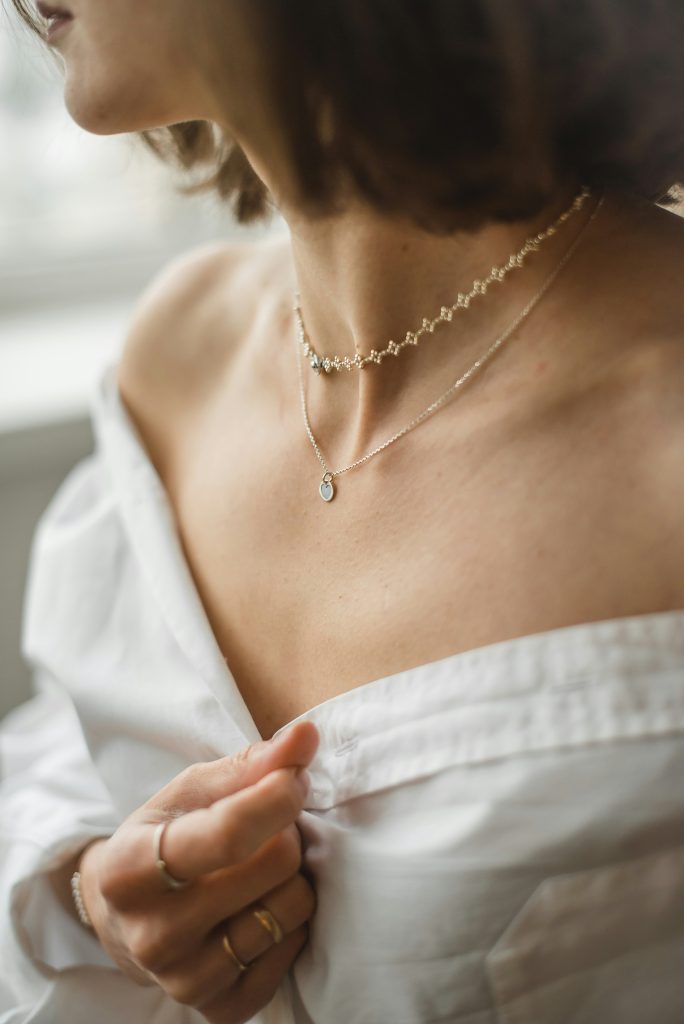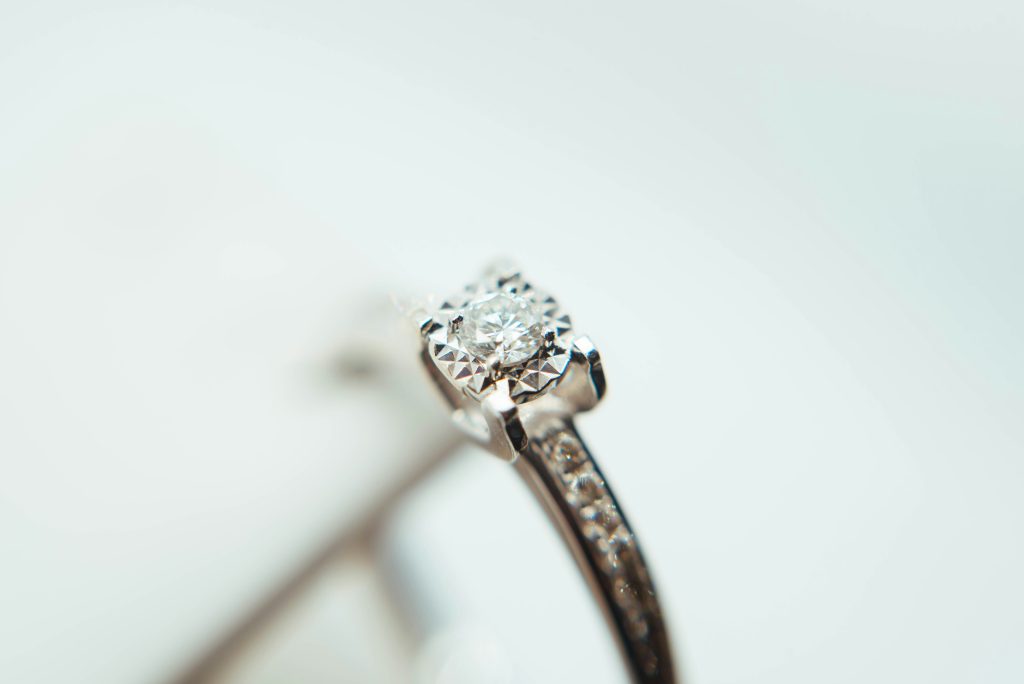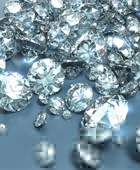Custom jewelry design offers a unique opportunity to create a piece of jewelry that is truly one-of-a-kind, reflecting your personal style, story, and preferences. Unlike mass-produced jewelry, custom pieces are crafted specifically for you, making them perfect for special occasions, heirloom gifts, or simply expressing your individuality. This article provides an in-depth exploration of the custom jewelry design process, from the initial concept to the final creation, while highlighting the various services offered by jewelry design companies to bring your vision to life.

1. The Inspiration and Concept Phase
The journey of creating custom jewelry begins with an idea or inspiration. This phase is all about conceptualizing what you want your piece to represent and how you want it to look. Here are some key considerations during the concept phase:
- Finding InspirationInspiration for custom jewelry can come from various sources. It might be a significant event, such as an engagement or anniversary, that you want to commemorate with a unique piece. Alternatively, you might draw inspiration from your personal experiences, cultural heritage, or even nature. Some clients find inspiration in existing jewelry designs, historical pieces, or artwork, which can serve as a starting point for creating something new.
- Defining Your VisionOnce you have an idea of what inspires you, it’s important to define your vision for the piece. Consider what type of jewelry you want to create—whether it’s a ring, necklace, bracelet, or another item. Think about the materials you’d like to use, such as gold, platinum, or silver, and the gemstones you want to feature. Defining your vision early on helps guide the design process and ensures that the final piece aligns with your expectations.
- Initial Consultation with a DesignerAfter forming a rough concept, the next step is to consult with a professional jewelry designer. During the initial consultation, you’ll discuss your ideas and preferences with the designer, who will help refine your concept and provide expert guidance. This meeting is crucial for translating your abstract ideas into a tangible design that is both beautiful and functional. The designer may ask questions about your lifestyle, budget, and any specific requirements to better understand your needs.
- Setting a BudgetBudget is a critical factor in custom jewelry design. During the concept phase, it’s important to establish a budget that takes into account the cost of materials, design work, and craftsmanship. A professional designer will help you understand the costs associated with different materials and design elements, allowing you to make informed decisions that align with your financial plan. Transparency about your budget from the beginning ensures that the designer can create a piece that meets your expectations without exceeding your financial limits.
2. The Design and Sketching Phase
Once the initial concept is clear, the design process moves into a more detailed phase, where ideas start to take shape on paper and through digital models. This phase involves the following steps:
- Creating Preliminary SketchesThe designer begins by creating preliminary sketches of your custom piece. These sketches are usually done by hand and provide a visual representation of the concept you discussed. The sketches may include different views of the jewelry piece, such as top, side, and perspective views, to give you a comprehensive understanding of the design. At this stage, the designer may present multiple variations of the design for you to choose from, allowing you to explore different options before finalizing the details.
- Incorporating Client FeedbackAfter reviewing the preliminary sketches, you’ll have the opportunity to provide feedback and request adjustments. This collaborative process ensures that the design evolves according to your preferences. You might suggest changes to the shape, size, or placement of gemstones, or request modifications to the overall design. Open communication between you and the designer is key to achieving a result that fully captures your vision.
- 3D Modeling and Digital RenderingsWith the advent of technology, many jewelry designers now use 3D modeling software to create digital renderings of custom designs. These renderings offer a highly detailed and realistic preview of the finished piece. Unlike hand sketches, digital models allow you to see the design from every angle and even simulate how the piece will look when worn. This phase is particularly useful for visualizing intricate details and making final adjustments before moving forward with production.
- Selecting Materials and GemstonesThe design phase also involves choosing the specific materials and gemstones for your custom piece. Your designer will present you with options based on your preferences and budget. This may include selecting the type of metal (e.g., gold, platinum, or silver), the quality and size of gemstones, and any additional materials such as enamel or engraving. The choice of materials plays a significant role in the overall aesthetic and value of the jewelry, so careful consideration is essential.
- Approval and Finalization of the DesignOnce you are satisfied with the design, the final step in this phase is to approve the design for production. This approval marks the transition from the design phase to the creation phase, where the concept will be brought to life through skilled craftsmanship. Before giving the final approval, ensure that all aspects of the design, including dimensions, materials, and details, meet your expectations. It’s also a good time to review the project timeline and cost estimate with your designer.
3. The Creation and Crafting Phase
With the design finalized, the custom jewelry piece moves into the creation phase, where skilled artisans bring the design to life. This phase involves several steps, each requiring precision and expertise:
- Wax Model or Prototype CreationBefore crafting the final piece, many jewelers create a wax model or prototype based on the approved design. This model serves as a physical representation of the jewelry and allows you to see and feel the piece in a more tangible form. The wax model can be adjusted if necessary, providing one last opportunity to make minor changes before production begins.
- Casting the PieceOnce the wax model is approved, the next step is casting the piece in the chosen metal. The lost-wax casting process is commonly used in jewelry making, where the wax model is encased in a mold, melted away, and replaced with molten metal. This process requires great skill to ensure that the metal is cast flawlessly, capturing all the intricate details of the design.
- Setting GemstonesAfter the metal casting is complete, the gemstones are carefully set into the piece. This step requires precision to ensure that each stone is securely placed and positioned to maximize its brilliance and beauty. Different setting techniques, such as prong, bezel, or pave settings, may be used depending on the design and type of gemstones. The setting process is a delicate art, as improper setting can affect the appearance and durability of the jewelry.
- Polishing and FinishingThe final piece undergoes polishing and finishing to enhance its appearance and achieve the desired look. Polishing smooths out any rough edges and gives the metal a lustrous shine, while additional finishing techniques, such as texturing or engraving, add unique touches to the design. The result is a beautifully crafted piece of jewelry that reflects the highest standards of craftsmanship.
- Quality Control and InspectionBefore the jewelry is presented to you, it goes through a thorough quality control process. This includes inspecting the piece for any flaws or imperfections, verifying the accuracy of the design, and ensuring that the gemstones are securely set. High-quality custom jewelry should meet strict standards, and any issues identified during inspection are addressed before the piece is delivered to you.
4. Delivery and Presentation of the Final Piece
Once the creation and quality control phases are complete, the final step in the custom jewelry design process is the delivery and presentation of your finished piece. This moment is often highly anticipated, as you finally get to see your vision transformed into reality.
- Revealing the Finished JewelryThe jeweler will present the completed jewelry piece in a carefully crafted and elegant presentation. This may include a luxurious jewelry box or pouch, depending on the company’s service offerings. The presentation of the final piece is often as special as the creation process, allowing you to fully appreciate the craftsmanship and detail that went into making your custom design.
- Reviewing the Finished PieceUpon receiving your custom jewelry, you’ll have the opportunity to review it closely. Examine the quality of the materials, the setting of gemstones, and the overall execution of the design. If there are any discrepancies or areas where adjustments are needed, most jewelry designers will work with you to ensure that the final piece meets your expectations completely.
- Care and Maintenance GuidanceMany jewelry companies provide detailed instructions on how to care for your custom jewelry. This is especially important for high-value pieces or those featuring delicate gemstones. Proper maintenance ensures the longevity and brilliance of your custom piece for years to come. Depending on the company, you may also be offered services like free cleanings, inspections, or resizing in the future.
5. Custom Jewelry Design Services: What to Expect from a Jewelry Company
When you choose to work with a jewelry design company for custom pieces, the level of service and expertise they provide is crucial to the success of your project. High-quality jewelers offer a range of services to ensure your experience is seamless and enjoyable. Here are some key services to look for:
- Personalized ConsultationsA reputable jewelry company will offer personalized consultations where you can discuss your design ideas, preferences, and budget. These consultations are the foundation of the custom design process, allowing the jeweler to understand your vision and provide expert recommendations on materials, gemstones, and design details.
- Experienced Jewelry Designers and ArtisansWorking with experienced jewelry designers and skilled artisans is essential for achieving a high-quality custom piece. Look for a company with a proven track record in custom jewelry design and craftsmanship. Some jewelers may have in-house designers, while others may collaborate with independent or guest designers to bring unique perspectives and expertise to their work.
- 3D CAD Modeling and PrototypingModern jewelry design companies often provide 3D CAD (computer-aided design) modeling services, allowing you to see a digital rendering of your piece before it’s made. This technology ensures that the design is precise and meets your expectations. Some companies also offer the option to create physical prototypes, such as wax models, so you can examine the piece in person before production begins.
- Custom Gemstone SourcingIf your custom design requires specific gemstones, such as a rare color diamond or a unique gemstone shape, many jewelry companies offer gemstone sourcing services. This means they can find or commission the perfect stone for your design, ensuring that it meets the quality, size, and color specifications you desire. Ethical sourcing is also a consideration—some companies focus on providing conflict-free gemstones or working with eco-friendly materials.
- Repurposing Existing JewelrySome clients choose to incorporate heirloom pieces or existing jewelry into their custom designs. A good custom jeweler will offer services that allow you to repurpose sentimental jewelry into a new design. This might involve re-setting gemstones from an inherited piece or using materials from an old ring or necklace to create something entirely new.
- Collaborative Design ProcessOne of the most valuable services a custom jewelry company can provide is a truly collaborative design process. This means that throughout every step—concept, design, creation, and finishing—you are kept informed and involved. A designer who values your input will regularly update you with progress reports, sketches, and digital renderings, ensuring that the final result is exactly what you envisioned.
- Lifetime Guarantee and Aftercare ServicesA high-quality custom jewelry company should stand behind its work with a lifetime guarantee or warranty on the craftsmanship. Aftercare services like complimentary cleanings, stone inspections, or resizing are also valuable offerings. These services not only protect your investment but also ensure that your custom jewelry remains in excellent condition over time.
6. Why Custom Jewelry Design Matters
Custom jewelry design offers numerous benefits that go beyond aesthetics. Here are several reasons why creating a custom piece is a meaningful choice:
- Personal Expression and StorytellingOne of the most significant advantages of custom jewelry is the ability to tell a personal story. Whether it’s a symbol of a relationship, a celebration of a milestone, or a reflection of your unique style, custom jewelry allows you to create a deeply meaningful piece that holds sentimental value. Every design decision, from the gemstones to the setting, can carry personal significance, making the jewelry truly one-of-a-kind.
- Superior Quality and CraftsmanshipCustom jewelry is typically crafted with a higher level of care and attention to detail than mass-produced pieces. Artisans who specialize in custom design take pride in their work, ensuring that every element of the jewelry meets the highest standards of craftsmanship. This often results in a more durable and valuable piece that can become a cherished heirloom.
- Ethical and Sustainable ChoicesMany custom jewelry designers prioritize ethical and sustainable practices, such as sourcing conflict-free diamonds and using recycled metals. By choosing custom jewelry, you have more control over the ethical aspects of your purchase, allowing you to make choices that align with your values. Some designers even specialize in creating eco-friendly or fair-trade pieces, making custom jewelry an ethical investment.
- Uniqueness and ExclusivityCustom jewelry is unique by definition, as it’s designed specifically for you. Unlike store-bought pieces, which are often replicated and sold in large quantities, your custom design will be the only one of its kind. This exclusivity adds to the emotional and financial value of the piece, making it truly special.
- Perfect Fit for Your NeedsCustom jewelry is designed to fit your needs perfectly. Whether it’s creating an engagement ring that reflects your partner’s style, designing a necklace with specific symbolism, or ensuring a bracelet fits your wrist exactly, custom design allows for precise personalization. You can also request practical features, such as adjustable sizing or comfort-fit bands, to make the jewelry more wearable.
7. Conclusion: The Beauty of Custom Jewelry Design
Custom jewelry design is a collaborative, creative process that results in a piece of jewelry that is as unique as the person who wears it. From the initial concept to the final creation, every step of the process is tailored to reflect your vision, preferences, and values. By working with a reputable jewelry designer, you can bring your ideas to life and create a beautiful, lasting piece that tells a personal story and becomes a cherished part of your life.
Whether you’re creating an engagement ring, a commemorative necklace, or a one-of-a-kind bracelet, custom jewelry offers endless possibilities for personalization, creativity, and meaning.





